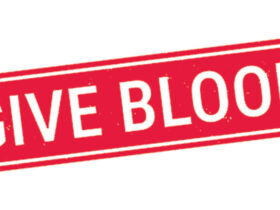Data to inform ongoing efforts and outreach about heart failure – a life-threatening condition and major public health issue
 Nearly six million Americans currently live with heart failure, yet a recent national survey found potentially dangerous misconceptions and knowledge gaps about the disease. In fact, nearly half of those surveyed got fundamental facts about heart failure wrong and two-thirds of respondents confused signs of heart failure with signs of a heart attack.
Nearly six million Americans currently live with heart failure, yet a recent national survey found potentially dangerous misconceptions and knowledge gaps about the disease. In fact, nearly half of those surveyed got fundamental facts about heart failure wrong and two-thirds of respondents confused signs of heart failure with signs of a heart attack.
The American Heart Association, with support from Novartis Pharmaceuticals Corporation, commissioned the survey of more than 1,600 people as the first in an annual review of heart failure knowledge and attitudes in America. Survey respondents included the general public, as well as people living with heart failure and those who care for them.
While most general population respondents (70 percent) said they were aware of heart failure, survey results showed many people, including patients and caregivers, have misunderstandings about the condition and its causes and symptoms. Fifty-eight percent of those surveyed mistook heart failure as a natural cause of death that occurs when the heart stops beating. Additionally, nearly half (46 percent) of respondents incorrectly said heart failure is a silent killer with no symptoms.
In reality, heart failure occurs when the heart can’t pump blood efficiently enough to meet the body’s needs. Heart failure results from the added stress of health conditions that either damage the heart or make it work too hard. There are important symptoms to recognize, including difficulty breathing, fatigue, weight gain of three or more pounds in a day and swelling of the feet, ankles and legs. There is no cure for heart failure, but there are ways to help manage the condition.
“Being aware of the risks and symptoms of heart failure and receiving prompt and proper treatment are key to battling this disease, and that’s why these survey results are concerning,” said Gregg C. Fonarow, M.D., Director of the Ahmanson-UCLA Cardiomyopathy Center and Co-Chief of the UCLA Division of Cardiology in Los Angeles. “Heart failure is a serious, chronic condition. It requires recognition, treatment and constant monitoring of signs and symptoms to make sure the condition is not worsening, so that quick action to adjust medications or behaviors may be instituted.”
It’s estimated that 1 in 5 Americans will develop heart failure in their lifetime and 1 in 9 deaths in the U.S. includes heart failure as a contributing cause. There are more than 870,000 new heart failure cases in the U.S. each year, which means that at least one person is diagnosed with heart failure every minute. Hospitalizations and other costs associated with heart failure exceed $30 billion dollars a year, making it one of the most common and costly heart diseases in the U.S.
“Many people with heart failure can lead full, enjoyable lives managing their condition with proper treatment and healthy lifestyle changes,” said Fonarow, who is also a Professor of Medicine at the UCLA Division of Cardiology. “This is why it is so important for patients and caregivers to understand the disease, and to work together to manage it.”
Survey results showed caregivers were more likely than patients to correctly identify the signs and symptoms of heart failure — and feel more impacted by it.
• 71 percent of caregivers feel heart failure impacts their relationships vs. 56 percent of patients with heart failure.
• 86 percent of caregivers say the condition impacts their ability to travel vs 54 percent of patients with heart failure. It also effects their ability to participate in family events (82 percent vs. 65 percent, respectively) and to participate in hobbies (87 percent vs. 71 percent, respectively). Additionally, caregivers were more likely than patients to report feeling anxiety (75 percent vs. 63 percent) or depression (69 percent vs. 56 percent) as a result of dealing with heart failure.
In the coming months, the American Heart Association will seek feedback from patients, caregivers and healthcare providers to hear more about their experiences and challenges in managing heart failure. People can visit heart.org/heartfailure to share their personal stories and sign up for more information and regular updates on heart failure news and activities.
“The significant issues associated with heart failure can’t be solved by any one organization,” Fonarow said. “These insights and further findings from the survey can guide us as we bring together individuals and organizations to provide solutions that will truly make an impact on patients and their loved ones.”
About the Survey
During the Spring of 2015, the American Heart Association, with support from Novartis Pharmaceuticals Corporation, commissioned an online survey of more than 1,600 people as the first in an annual review of heart failure knowledge, awareness, impact and attitudes in America. The survey polled over 1,000 members of the general public, as well as 400 patients with heart failure and 200 caregivers.
Additional Resources:
• Video: Dr. Mariell Jessup, immediate past president of the American Heart Association, discusses the impact of heart failure.
• Video: Heart failure survivor, Jennifer, and her family tell their story.
The American Heart Association/American Stroke Association receives funding mostly from individuals. Foundations and corporations donate as well, and fund specific programs and events. Strict policies are enforced to prevent these relationships from influencing the association’s science content. Financial information for the American Heart Association, including a list of contributions from pharmaceutical companies and device manufacturers, is available at www.heart.org/corporatefunding.









